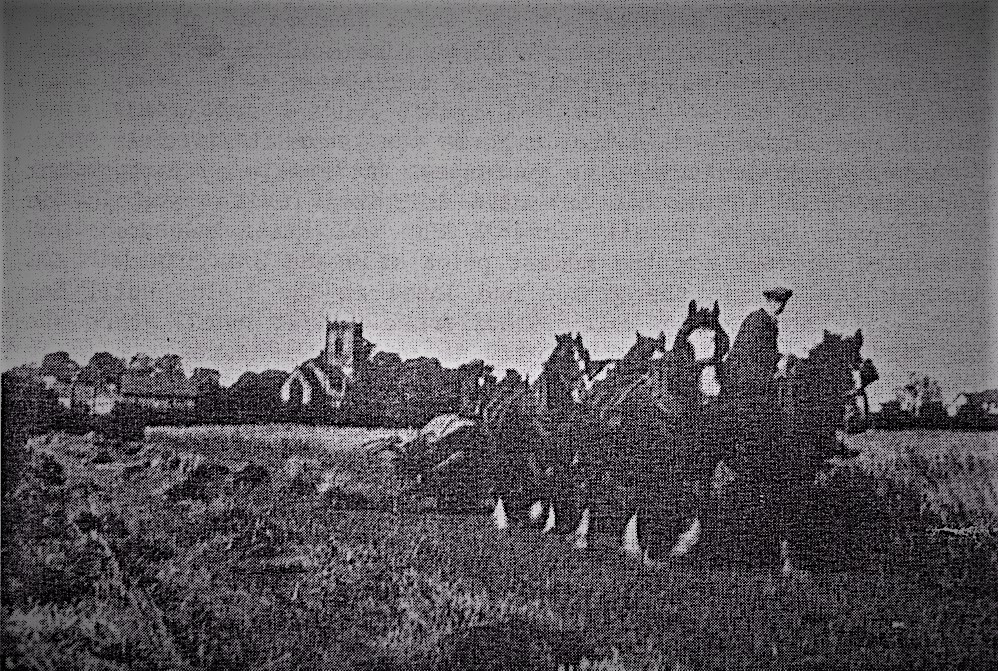
Arthur Prince, father of William, harvesting oats off Aberford Road, with the Church in the background.
Riding postillion is Fred Maw, the hired man.

| A: the engine man, who was usually the owner of the set; he controlled the
running of the steam engine. B: the Feeder (second man). C: The Band-cutter. D: 2 Corn carriers. E: 2 men who forked the sheaves onto the machine. F: 1 or 2 men at the "Tier End" who moved the "bats" of threshed straw to a stack. G: 1 or 2 men who stacked the bats. H: the Chaff and Pulse carrier. |